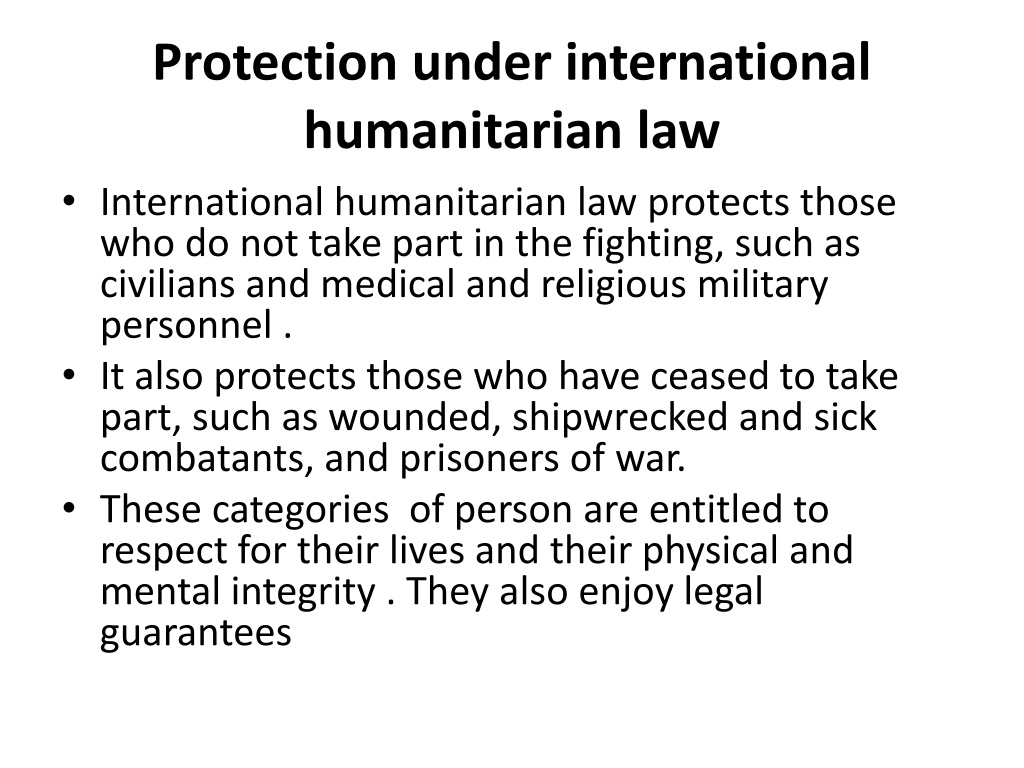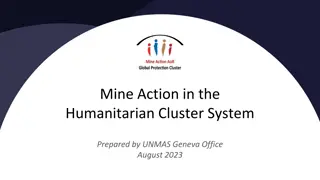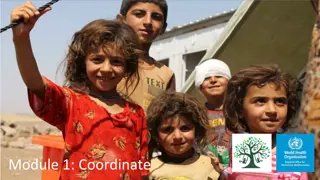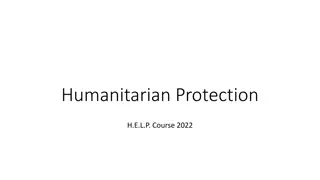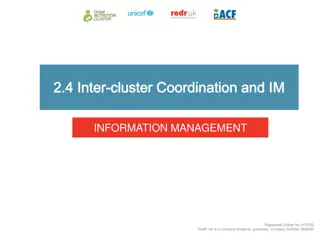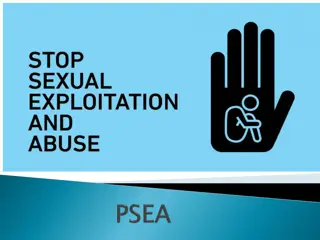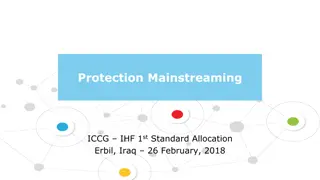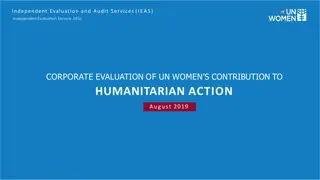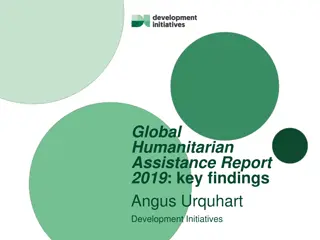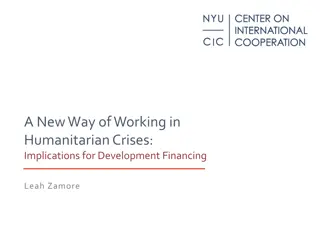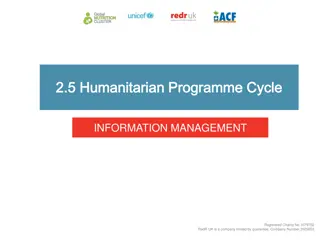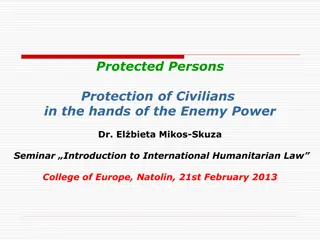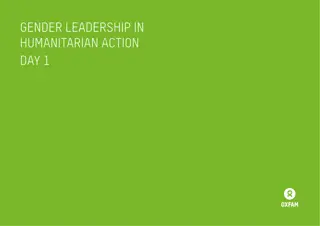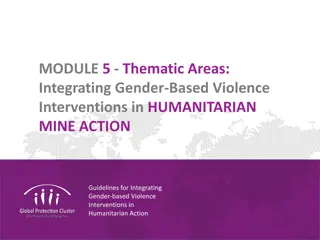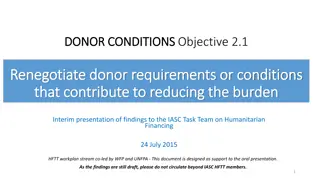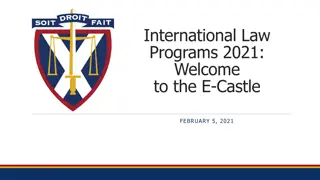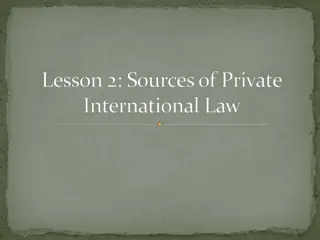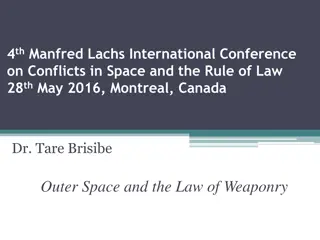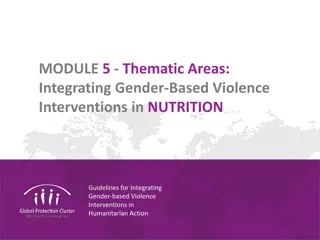International Humanitarian Law: Protection and Regulations
International humanitarian law safeguards civilians, medical personnel, and combatants who are wounded, sick, or imprisoned during armed conflicts. It prohibits indiscriminate warfare methods, ensures humane treatment for all parties, and mandates the use of identifiable symbols for protection. Nations must enforce these laws, educate their military and citizens, and prosecute war crimes effectively.
Download Presentation

Please find below an Image/Link to download the presentation.
The content on the website is provided AS IS for your information and personal use only. It may not be sold, licensed, or shared on other websites without obtaining consent from the author.If you encounter any issues during the download, it is possible that the publisher has removed the file from their server.
You are allowed to download the files provided on this website for personal or commercial use, subject to the condition that they are used lawfully. All files are the property of their respective owners.
The content on the website is provided AS IS for your information and personal use only. It may not be sold, licensed, or shared on other websites without obtaining consent from the author.
E N D
Presentation Transcript
Protection under international humanitarian law International humanitarian law protects those who do not take part in the fighting, such as civilians and medical and religious military personnel . It also protects those who have ceased to take part, such as wounded, shipwrecked and sick combatants, and prisoners of war. These categories of person are entitled to respect for their lives and their physical and mental integrity . They also enjoy legal guarantees
Cont they must be protected and treated humanely in all circumstances,. More specifically: it is forbidden to kill or wound an enemy who surrenders or is unable to fight: the sick and wounded must be collected and cared for by the party in whose power they find themselves. Medical personnel, supplies, hospitals, and ambulances must all be protected.
Cont There are also detailed rules governing the conditions Of detention for prisoners of war and the way in which civilians are to be treated when under the authority of an enemy power . This includes the provision of food, shelter and medical care, and the right to exchange messages with their families.
Cont The law sets out a number of clearly recognizable symbols which can be used to identify protected people ,and places. The main emblems are the red cross, the red crescent and the symbols identifying cultural property and civil defense facilities.
Restrictions on weapons and tactics International humanitarian law prohibits all means and methods of warfare which: -fail to discriminate between those taking part in the fighting and the civilians.
Cont - cause superfluous injury or unnecessary suffering. - cause severe or long-term damage to the environment. international humanitarian law has therefore banned the use of many weapons ,including exploding bullets, chemical and biological weapons ,blinding laser weapons and antipersonnel mines.
Measures necessary to implement the law Measures must be taken to ensure respect for international humanitarian law . States have on obligation to teach its rules to their armed forces and the general public .they must prevent violations or punish them if these nevertheless occur. In particular, they must enact laws to punish the most serious violations of the Geneva conventions and additional protocols which are regarded as war crimes .
Cont The states must also pass laws protecting the red cross and red crescent emblems. Measures have also been taken at an international level: tribunals have been created to punish acts committed in two recent conflicts ( the former Yugoslavia and Rwanda). An international criminal court ,which the responsibility of repressing inter alia war crimes, was created by the 1998roma statute.
Cont The main regional instruments are the European Convention for the protections of Human rights and fundamental freedoms (1950), the American declaration of the rights and duties of man (1948) and convention on human rights (1969), and the African charter on human and peoples rights (1981).
